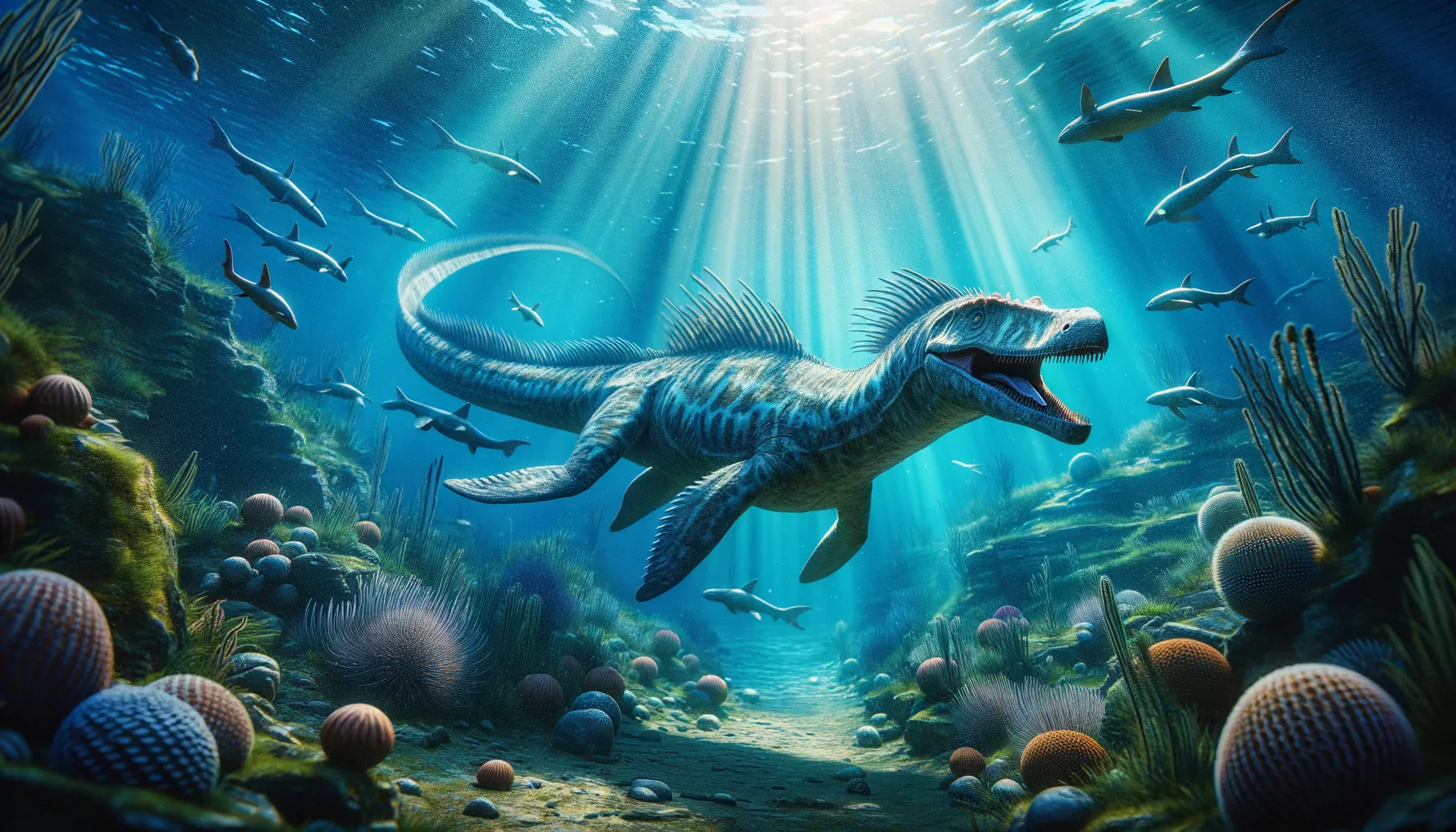
Gwyneddosaurus
Discover the mystery of ancient seas!
Period
Triassic
Length
Roughly 1 meter long.
Height
Approximately the size of a large dog.
Weight
Estimated to weigh around 15 to 20 kilograms.
The Gwyneddosaurus is a lesser-known marine reptile, often mistaken for a dinosaur, from the Late Triassic period. Found primarily in areas that are now North America, it shares a close relationship with Ichthyosaurs. Its fossilized remains suggest an adaptation to a life spent mostly in water, although it may have come onto land for specific activities. This creature offers valuable insights into the diversity of prehistoric marine life.
Diet
The Gwyneddosaurus had a diet primarily consisting of fish and small marine creatures. Its streamlined body suggests it was well-adapted to catching fast-moving prey in the water.
Hunting
It likely hunted using stealth and speed, surprising its prey. The creature may have used quick bursts of speed to catch unsuspecting prey swimming nearby.
Environmental challenges
Living in a marine environment, it faced challenges such as changes in sea levels and temperatures. These changes could affect the availability of prey and necessitate adaptations in hunting strategies. Predation from larger marine reptiles was also a constant threat to its survival.
Speed
Likely moved at a moderate pace on land.
Lifespan
Estimated to live several decades.
First discovery
First discovered in the 1970s in Pennsylvania.
Fun Facts
- Gwyneddosaurus is named after the county of Gwynedd in Wales, where its fossils were first discovered.
- This dinosaur is thought to have lived during the Early Jurassic period, about 200 million years ago.
- Unlike many dinosaurs, Gwyneddosaurus was relatively small, comparable to the size of a modern day lizard.
- Fossils of this dinosaur are rare, making it a notable find for paleontologists studying early dinosaur evolution.
- Despite its name, Gwyneddosaurus might not actually be a true dinosaur; some scientists consider it more closely related to early reptiles.
- Gwyneddosaurus is an important part of the puzzle in understanding how different dinosaur groups evolved and diversified.
- Its fossils provide valuable insights into the ecosystem and environment of ancient Wales during the Jurassic period.
Growth and Development
Gwyneddosaurus likely underwent rapid growth during its early life stages. Its development would have included adaptations for efficient swimming and hunting. Juveniles may have stayed in sheltered coastal waters until reaching a size less vulnerable to predators.
Habitat
This creature thrived in warm, shallow seas that covered much of North America during the Triassic. Its environment was rich in marine life, providing ample hunting opportunities. Coral reefs may have offered shelter and breeding grounds.
Interaction with other species
Gwyneddosaurus interacted with a variety of marine life, including potential predators and prey. It may have competed with other marine reptiles for food resources. Symbiotic relationships with other marine species could have facilitated its survival in diverse ecosystems.
Natural lifespan
Its lifespan was likely typical of marine reptiles of its size, living for several decades.
Reproduction
Like many marine reptiles, Gwyneddosaurus may have laid eggs on land. Alternatively, it might have given birth to live young in sheltered coastal areas. Young would have relied on hiding in shallow waters for protection.
Social behaviour
Gwyneddosaurus may have exhibited solitary behaviour, focusing on individual survival. However, during breeding seasons, it might have gathered in groups for mating. Social interactions would have been limited, primarily driven by necessity.
Fossil locations
Fossils of Gwyneddosaurus have been discovered primarily in the northeastern United States, notably Pennsylvania. These fossil sites provide crucial insights into the Late Triassic marine ecosystems. The fossils have been relatively sparse, leading to ongoing debates about its classification and biology.
